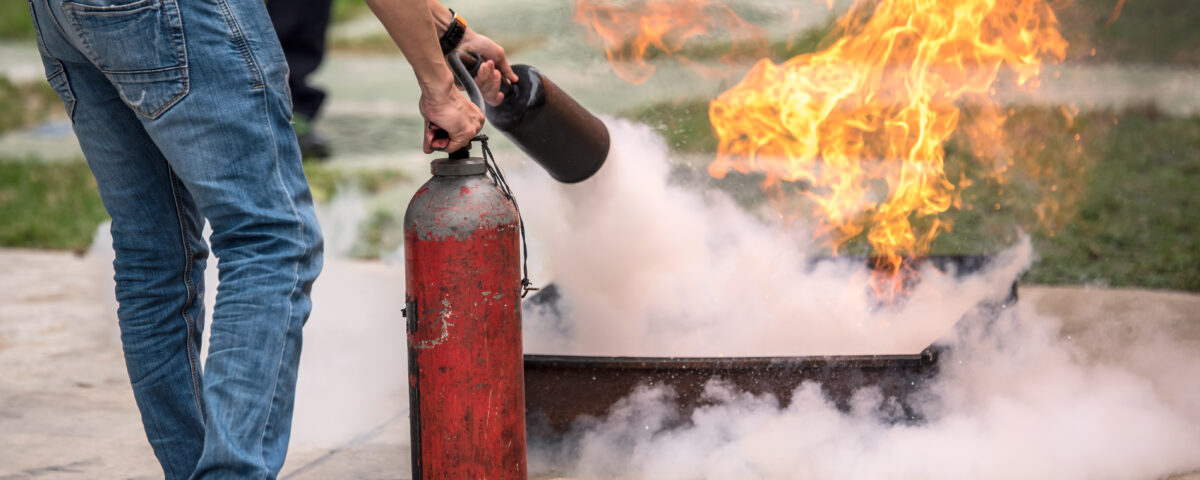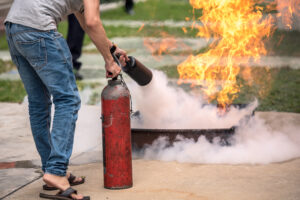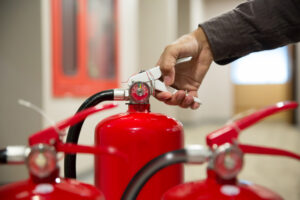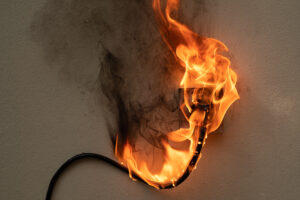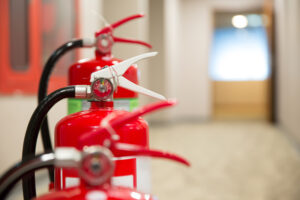- For secure high-pressure
- +36 62 999 051
- info@pwent.eu
Understanding Different Fire Extinguisher Types: A Comprehensive Guide
Last Updated on 2 years ago by admin
Fire safety is crucial in every environment, and having the right tools to combat fire is indispensable. Fire extinguishers can be a life-saving tool, and understanding the various fire extinguisher types is essential for effective fire management. This comprehensive guide delves into the science behind these tools, explores different types of fires, and matches fire extinguishers to specific fire classes.
The Science Behind Fire Extinguishers
Fire extinguishers disrupt the fundamental elements essential for a fire to sustain itself: heat, fuel, and oxygen. When the lever on the top of the extinguisher is pressed, it triggers the activation of a valve within, compelling it to force open. This action releases pressurized gas and the extinguishing agent through the nozzle, initiating fire suppression.
The active extinguishing agent employed in fire extinguishers comes in diverse forms, such as potassium bicarbonate (KHCO3) powder, liquid water, evaporating fluorocarbon, or CO2. Each variant serves a specific purpose: cooling the fuel, removing oxygen, or inhibiting the chemical reactions that contribute to the fire’s propagation.
Critical components of a fire extinguisher, including the cylinder, machine head, pressure gauge, valve, siphon, gas storage cylinder, spray system, bracket, and nozzle, work in tandem to ensure the efficient deployment of the extinguishing agent.
This collective effort is geared towards swiftly and effectively controlling and ultimately extinguishing fire across various environments. Fire extinguishers’ sophisticated design and functionality underscore their crucial role in fire safety protocols, providing a reliable means to combat different types of fire. Manufacturers like Pwent assist fire extinguisher manufacturers by supplying secure machinery.
Different Types of Fires
Understanding the nature of fire is crucial for selecting the appropriate fire extinguisher types. Classifying fires into distinct categories helps tailor the response strategy to the specific characteristics of each fire.
Class A Fires: Ordinary Combustibles
Class A fires involve ordinary combustibles such as wood, paper, cloth, rubber, and plastic. Recognizable by a steady flame and significant smoke production, these fires require foam or dry powder fire extinguishers.
Class B Fires: Flammable Liquids and Gases
Flammable liquids or gases, such as gasoline, oil, or propane, are classified as Class B fires. These fires spread rapidly, especially in confined spaces or containers, necessitating the use of CO2 Fire extinguishers
Class C Fires: Electrical Fires
Fires involving electrical equipment, appliances, or wiring fall under Class C. Caused by energized electrical elements, these fires pose unique challenges that demand CO2 Fire Extinguishers for electrical fires.
Class D Fires: Combustible Metals
Class D fires involve combustible metals like sodium, magnesium, aluminum, potassium, lithium, titanium, and zirconium. Identifying and responding to these fires requires specialized fire extinguisher types designed for combustible metals.
Class K Fires: Grease and Cooking Fires
Class K fires are commonly fueled by flammable cooking liquids in kitchen settings. Recognizing and addressing these fires promptly is essential, necessitating fire extinguisher types tailored for flammable cooking liquids.
Matching Fire Extinguishers to Fire Types
Choosing the right fire extinguisher type is crucial for effective fire suppression. Different fire extinguisher types are designed to tackle specific fire classes, ensuring a targeted and efficient response.
1. Water Fire Extinguishers
Water fire extinguishers are specifically designed for Class A fires, primarily involving ordinary combustibles. Identified by a red body and a white colored label, these extinguishers operate by cooling the fuel, effectively slowing down combustion until the fire is successfully extinguished.
Utilizing a water fire extinguisher has two primary advantages:
- It has no adverse environmental impact;
- It swiftly extinguishes fire due to the rapid cooling effect induced when the extinguisher is deployed.
2. Foam Fire Extinguishers
Suitable for Class A and B fires, foam fire extinguishers use a combination of water and Aqueous Film Forming Foam (AFFF). Recognizable by a red body and cream label, these extinguishers smother the fire and seal in flammable vapors.
This type of fire extinguisher is designed to prevent the re-ignition of fire. They are lighter than their equivalent water counterparts, non-toxic, and pose minimal damage to most materials.
3. Dry Powder Fire Extinguishers
Known as ABC fire extinguishers, dry powder fire extinguishers are versatile and effective on Class A, B, and C fires. They can also be used for electrical fires involving electrical equipment up to 1000V.
Identified by a red body and blue label, these extinguishers interrupt the chemical chain reaction, extinguishing the fire. Pwent, a trusted industry player, offers powder fire extinguisher filling and powder recovery for the maintenance of this type of extinguisher.
It is important not to use this type in case of fires in enclosed spaces and fires involving flammable metals unless you are using a specialist dry powder extinguisher
4. CO2 Fire Extinguishers
Primarily used for electrical fires (Class C) and practical for Class B fires, CO2 extinguishers replace oxygen with carbon dioxide stored in liquid form in the extinguisher. Recognizable by a red body and black label, these extinguishers offer a non-conductive solution for electrical fires.
When the handle is squeezed, the gas is produced under pressure. Unlike water and foam extinguishers, CO2 extinguishers do not work by cooling the fire. Consequently, they are not effective for fires involving flammable solids. CO2 and water extinguishers are the most common types of fire extinguishers used in offices.
5. Wet Chemical Fire Extinguishers
Designed for Class F fires involving cooking oils and grease, wet chemical extinguishers form a soapy film to smother and cool the fire. Identified by a red body and yellow label, these extinguishers are crucial for kitchen fire safety.
Conclusion
Understanding different fire extinguisher types and their uses is essential for ensuring the safety of individuals and property. By comprehending the science behind fire extinguishers, recognizing various fire classes, and selecting the appropriate extinguisher types, individuals can contribute to effective fire prevention and response strategies.
Pwent’s product philosophy is centered around modularity, offering a range of options with efficient production times. Choosing the right fire extinguisher type and using it correctly empowers people to act swiftly in the event of a fire, mitigating potential risks and protecting lives and assets.

